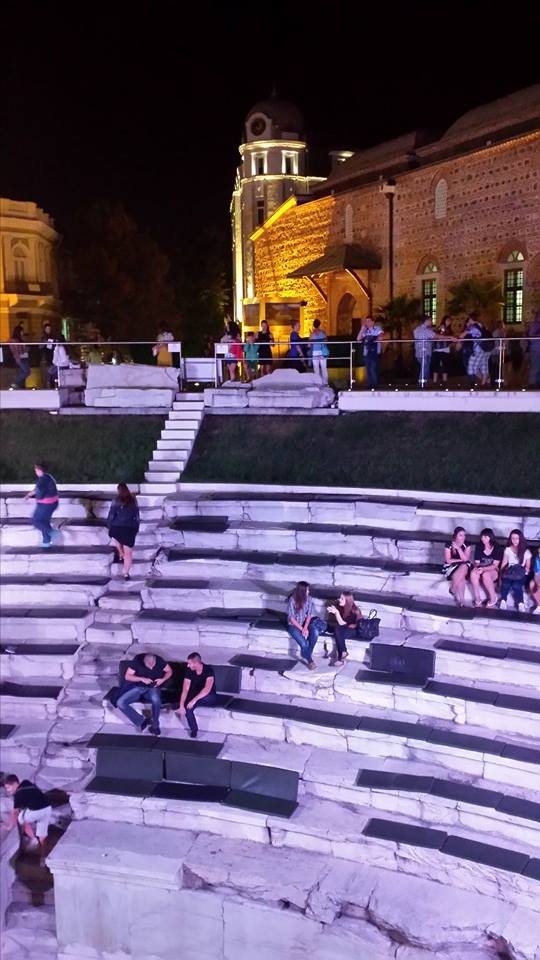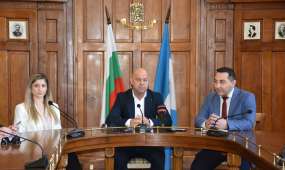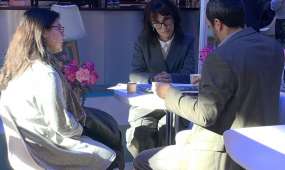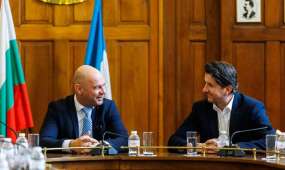10 reasons to visit Plovdiv according to Rough Guides
The well-acknowledged guide ''Rough Guides'' recognised Plovdiv not only as the most ancient living city in Europe,but also as ''one of the brightest rising stars on the Old continent''.The author of the article Jonathan Bousfield says of Plovdiv: ''Besides offering a great choice of archeological treasures,this is one of the most culturely buzzling places in Southeastern Europe- with many festivals, ART neighbourhoods and fascinating bars, all turning the modern explorers into more than happy''
Here are the 10 reasons why one must visit Plovdiv according to Rough Guides:
To explore the charming Old Town
Plovdiv’s hilltop Old Town offers arguably the best preserved collection of traditional architecture anywhere in southeastern Europe. If you want to know what Balkan towns looked like before the twentieth-century, then this is the place to find out. It was here that Plovdiv’s rich Bulgarian, Greek and Armenian merchants built large walled and gated houses, their overhanging upper storeys jutting out above narrow cobbled streets. Furnished in an opulent mixture of eastern and western styles, many are now open to the public as museum houses. If you only have time for one of them, visit the ornate Kuyumdzhiev House, now home to the Ethnographic Museum.
To seek out alternative Plovdiv
A great way to delve into other sides of the city is to follow the suggestions provided by the Alternative Map of Plovdiv, a fascinating exercise in cultural tourism that tells you where to find Bauhaus-influenced architecture, industrial heritage, and communist-era street mosaics – along with all manner of overlooked architectural gems.
To visit Roman remains
Not every city has a Roman stadium bang in the middle of its main shopping street, and while only one end of Plovdiv’s stadium is actually visible (the rest is still underground), it’s still a pretty dramatic sight, with its curve of terraced seating sitting in a hollow beneath a busy pedestrian precinct. Recently re-landscaped to form an attractive archeological park, it’s the perfect place to start your stroll of discovery through Roman Plovdiv. A little way uphill, on the fringes of the Old Town, is a beautifully-preserved Roman theatre that is still in use as a spectacular open-air performance venue. Roman streets and mosaics can still be seen in situ thanks to ongoing excavations around the forum, next to today’s Central Post Office.
To see the old and new in Kapana
Right next to the centre but very much a self-contained world of its own, the Kapana district is where the old and new Plovdiv come so fruitfully together. Formerly the bazaar quarter, this tight web of cobbled streets still contains the kind of artisan studios and craft shops that characterize the Balkans of yore – alongside a thoroughly contemporary breed of café-bars, discos and clubs. With raucous nightlife venues standing next door to snug bohemian drinking haunts, there’s something here for everyone – live music pub Petnoto and legendary boho bar Nylon are just two long-standing Rough Guides favourites.
To marvel at mosques and baths
Five centuries of Ottoman rule left a legacy of fine architecture, with the minarets of Plovdiv’s mosques attesting to the city’s diverse nature. One of the most striking buildings is the sixteenth-century Chifte Banya, a multi-domed former bath-house that nowadays serves as atmospheric location for contemporary art exhibitions.
To enjoy a Capital of Culture
Plovdiv’s stint as Europe’s Capital of Culture (scheduled for 2019) might seem like a long way off, but don’t be afraid of travelling too early – the city already has a discernable cultural buzz. The city’s new-found status as the nation’s arts capital seemed to be confirmed in 2014 when the much vaunted, internationally recognised Sofia Design Week (now renamed One Design Week) relocated to Plovdiv instead – along with sister events One Dance Week (October) and One Architecture Week (September/October).
For creativity at the Art News Café
Many of the cultural energies shaping today’s Plovdiv emanate from a single address on Otets Paisiy Street, site of both the Art News Café and its sister organization, the Sariev Contemporary art gallery. As well as being everything a good café-bar should be (selling everything from great coffee to craft beers and homemade cookies), Art News Café also serves as the artistic community’s social centre, hosting talks, film shows and art-parties. The next-door gallery may be small in size but it has had a inversely proportional impact on the Bulgarian art scene – all the leading contemporary artists have exhibited here, and for many of them Sariev has proved to be a launching pad for their most significant work.
To enjoy September celebrations in the city
High summer in Plovdiv can be stiflingly hot and relatively quiet, with many of its inhabitants leaving town for the seaside. September is when the fun kicks off again, with a string of theatre, arts and music festivals injecting extra energy into the autumnal social round. The one September event to make a date for is the Night of Museums and Galleries, which transforms the city centre into a huge art-party zone. All of the city’s cultural institutions organise something special – moving from one venue to another quite literally takes all night.
For a day trip Bachkovo Monastery
Most popular day trip from Plovdiv is to Bachkovo Monastery, a medieval foundation tucked into a wooded valley 30km south of the city. A walled complex with two arcaded courtyards and a pair of extravagantly decorated churches, it’s the ideal place to get to grips with the vibrant spirituality of Bulgarian Orthodoxy. The setting is magnificent too, with wooded slopes on all sides and plenty of nearby nature walks.
To experience icons and incense at church
Central Plovdiv contains a generous sprinkling of atmospheric old churches, most of which date from the eighteenth and nineteenth centuries, although their origins are usually much older. Filled with icons, carved wooden fittings and candle smoke they convey a raw, intimate mysticism. Many are painted with frescoes both inside and out and constitute complete works of art: the Church of Saints Constantine and Helena in the Old Town is one of the best examples. The next-door icon gallery contains a thorough overview of the whole genre.
Read more: http://www.roughguides.com/article/plovdiv-bulgaria/#ixzz3TzQI5vH5
Source: roughguides.com












Add new comment